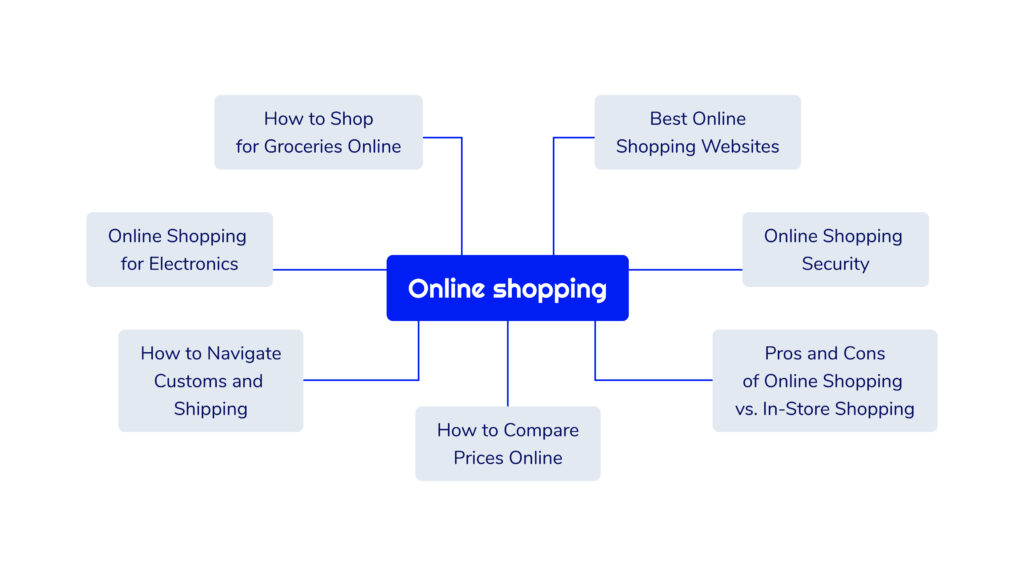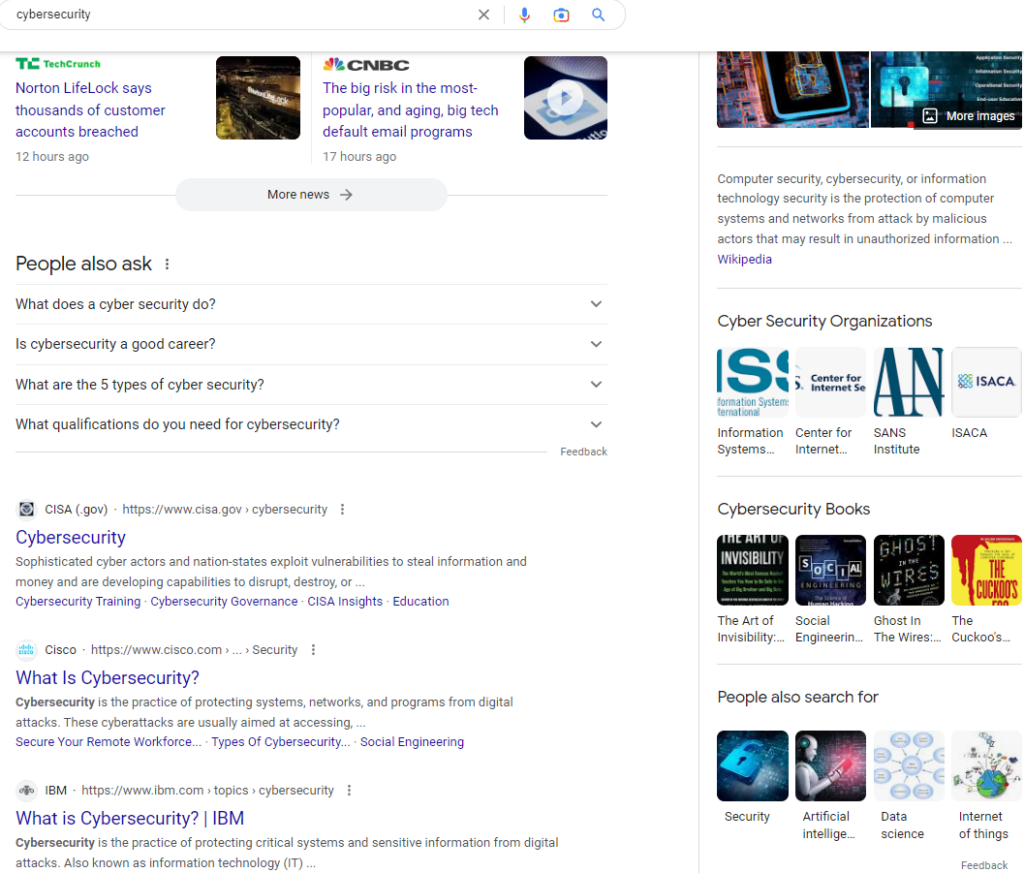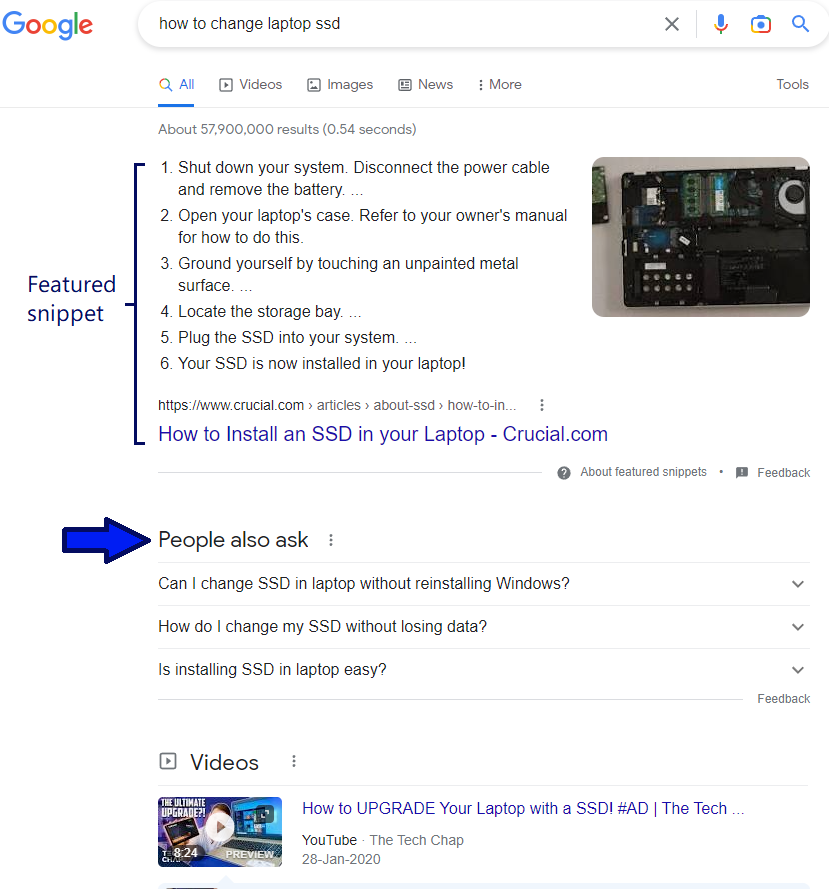
Most businesses today, including those in the SaaS industry, understand the importance of having an online presence. However, they don’t know where to start and how to go about it. You might have put up a website or created business profiles on a bunch of social media platforms, but that might not be enough.
The goal of having an online presence is to attract significant attention to your brand and bring in business from various online channels. Just like you market your offerings offline, it is important to do the same online and establish an identity and presence that is strong enough to generate sales.
Search engine results are one of the best sources of organic traffic. By taking some simple measures, your website can find its way to the topmost results on the first page and boost your search visibility score in a purely organic manner without resorting to expensive paid campaigns.
Read on to learn some effective tips on how to boost your business’s search engine visibility the ethical way.
What is search engine visibility?
Search engine visibility, also known as website visibility or site visibility, is the percentage of total clicks your website gets based on the keywords that you rank for on search engines such as Google. This percentage, which is sometimes called the SEO visibility score, is not an exact figure but a predictive approximation based on what positions your keywords rank on in search results pages.
The order in which websites rank determines their visibility. Generally, the top three spots on the first page of Google search results are said to have the highest visibility, which means users are most likely to click on them when they search for keywords that these pages rank for.
As you go down the page, the visibility of the remaining results decreases. In fact, it drops rapidly to zero as a website moves further away from the first SERP.
Why it is important to be more visible on search engines
Search engine visibility affects the chances of your website being visited by users. If people don’t see your website in search engine results, they will not be able to reach it. This low traffic will directly translate into low sales.
It is important to not only be visible in SERPs but also consistently maintain this online presence if you want to establish a powerful brand identity. Otherwise, like they say, out of sight, out of mind. Your business won’t have a strong impact on your target audience and will fail to gain its trust and loyalty. You will quickly get lost in the sea of competitors out there.
Search engine visibility can change over time due to various factors that you need to consider when developing your search engine optimisation (SEO) efforts. Let’s go over these factors and explore how you can optimise them to maximise your search visibility.
How to boost your search engine rankings
There are several ways to boost your search engine visibility in an ethical manner without violating any of the rules set by most search engines.
1. Establish topical authority
This is one of the most important aspects of boosting your brand image and visibility.
Google evaluates and prioritises websites by how authoritative the content published on them is. It follows the EEAT principle, sometimes referred to as the Double-E-A-T. Under this principle, Google believes that any piece of published content should reflect the following.
- Experience: Suppose you are writing a product review. You should have first-hand experience with using the product if you want your content to hold value.
- Expertise: Do you have sufficient, preferably proven, knowledge about the topic you have written on? Can you be considered an expert?
- Authoritativeness: The writer or brand should be an established authority in the industry or niche they write about.
- Trustworthiness: Factual correctness of the content, reliable citations, and cybersecurity are some examples of how Google judges the trustworthiness of a website.
Search engines determine your authority by measuring the depth into which you’ve gone when covering content on a single subject or niche, keeping the various semantic associations in mind.
Covering one-off topics solely for the purpose of ranking on a single keyword (such as what is done in the case of newsjacking) is no longer a viable strategy for ranking higher on search engines. Instead, niche-focused websites take the lead as they have proven expertise in and knowledge of their particular domain.
To establish topical authority, you should first define content taxonomy and create clusters around relevant keywords specific to your niche. For each of these topics, write highly focused content that matches its top search intent. Add valuable data, facts, graphs, infographics, images, and videos from reliable sources, or your original findings from first-hand primary research.
If you’re writing about online shopping, for example, you can prepare content on various sub-topics related to your main topic, such as best online shopping websites, pros and cons of online shopping, and how to compare prices online, to support your main topic.
As a bonus step, acquire authoritative backlinks to these content pieces. Simultaneously work on implementing an internal linking strategy within clusters so that search engines know you have enough knowledge to create multiple pieces on similar topics.
2. Target the right keywords
As a business, it would make sense for you to target keywords with transactional and commercial intent since they would bring forth visitors looking to buy what you’re selling. Let’s say you are a business offering cybersecurity services. You create a landing page that you want to rank for “cybersecurity”. But the top results for this search term show pages with informational content.
This means people looking up this term do not want to buy services. They want to know what cybersecurity is. Thus, even if you successfully ranked for this keyword, it would not bring any traffic or business to your service page.
You also need to be mindful of the reasons why users search for a certain keyword and what they want to know. This is called search intent. The keywords that you target should have high relevance. Otherwise, you can suffer high bounce rates or get little to no traffic on your page.
If you want to increase your chances of becoming visible, it makes sense to target keywords that have high search volumes, i.e., words or phrases that a lot of people look up. But a high search volume without enough subsequent website traffic doesn’t hold much value. Thus, your target keyword should also have high traffic potential. Keep in mind the clicks per search (CPS) for each high-volume keyword. A lot of times, such as in the case of featured snippets, users find answers straight away atop the search results, and so they leave without further clicking any links. You can check actual traffic stats for competing high-ranking SERPs using certain SEO tools, and then decide which keywords to pursue.
Another factor to consider is competition. Use a tool such as Ahrefs to check the keyword difficulty. This score shows how easy or difficult it would be to rank for a particular keyword. The higher the score, the higher the competition.
For starters, it is a good idea to start with long-tail keywords until your website profile becomes strong enough to compete in the big leagues.
3. Optimise your website content
Content optimisation is perhaps the most misunderstood and incorrectly executed part of search engine optimisation strategies. But when done right, it can work wonders for your search engine visibility.
There are several ways to optimise content in line with search engine guidelines. For example, you should work on using the right HTML tags to define the content structure, such as an <h1> tag for the main heading, <h2>-<hx> tags for subsequent hierarchical sub-headings, and <p> tags for paragraphs.
Meta tags are also crucial if you want to boost your site rank in the SERPs. Write an accurate and relevant meta title and meta description for each page of your website. Both the title and the description should clearly communicate what your page is about. It is also a good idea to include important keywords here.
Here’s how we’ve done it.
This is what it looks like in search results.
Write catchy headlines. Don’t make them sound like clickbait, though. Otherwise, your dwell time will plummet. This means users will return to SERPs within seconds when they don’t find what they were expecting your page to be about. For example, if you write a headline, “Top 5 Free Streaming Services”, and then proceed to write about Netflix or Amazon Prime Video, which are paid services, users will find your content useless and won’t bother reading your entire article. This will alert Google about the irrelevance of your webpage, resulting in downranking.
The content must be unique – it is super easy for search engines to detect plagiarism. You might be able to get away with it at first, but it can later be heavily penalised when Google finally catches up to you. You can check your content for plagiarism using tools such as Grammarly.
Your content should be supplemented with visual aids such as images and GIFs. Media should be properly captioned, and alternate text (alt tags) should be added to help search engines understand their relevance and relation to your content.
If you write content from the perspective of your target audience, you will be able to answer some common questions that they may have when searching for keywords related to your niche. If you answer these questions right, you can get a boost in search results and have your site show up in featured snippets and People Also Ask (PAA) boxes. You can even add FAQ schema markup to prompt Google to generate a rich snippet for you, bringing even more attention to your website in the SERPs.
Some useful tools that can help you with content optimisation.
- SEO minion (free browser extension)
- SEOquake (free browser extension)
- Keywordseverywhere (very useful and only 10 USD)
- Surfer SEO (paid)
- Ahrefs (paid)
- Semrush (paid)
4. Optimise your website speed and performance
On top of optimising your content, there are also some other aspects of your website that need to be perfected in order to boost your search engine visibility.
The first factor is your website’s speed and load time, which you need to optimise and monitor regularly. The longer it takes for your website to open, the higher the chances of visitors bouncing back and going for competitors’ search results.
There is no fixed formula for success, but according to trusted sources such as Semrush, a page load time of 1-2 seconds is a good goal to have. You can use tools such as Google Search Console, Google Analytics, and Lighthouse chrome extension to monitor your page speed and performance. These tools measure metrics such as page load time, First Contentful Paint (FCP), and Largest Contentful Paint (LCP). They also pinpoint if there are any technical issues or risks with the web or mobile version of your website.
You can speed up your website with plugins such as WP Rocket for WordPress. Other ways to improve performance include:
- Using JPG images instead of PNG image formats for better compression and smaller file sizes that load faster
- Offering a flawless, intuitive user experience in terms of content and page structure, formatting, readability, and design
- Minimising website downtimes and scheduling maintenance activities without interrupting visitors’ experiences
- Fixing broken links and implementing 301 redirects when and where needed, such as in cases where you’ve made changes to page URLs, slugs, or content hierarchy
The goal of this activity is to keep visitors engaged with the page so that they spend longer on your page and consequently establish its relevance and importance to the search engine. If the website’s performance is unsatisfactory, you could lose potential customers to competing businesses in a heartbeat.
5. Adopt mobile-friendly design and development practices
According to a 2021 survey by Statista, 64% of all organic search visits in the US come from mobile devices. Over the last decade or so, these numbers have been climbing steadily. Therefore, Google prioritises websites and webpages that are built with a mobile-first approach. In fact, Google has introduced a tool of its own where you can enter your website’s URL and check if it is sufficiently optimised for mobile users.
If your site isn’t mobile-friendly, it will be pushed down by others that are.
Here are some ways to make your website mobile-friendly.
- Monitor page load speed and time specifically for mobile using online tools
- Create responsive design, making pages easily adapt to different screen sizes depending on the type of device they are viewed on without breaking any elements
- Get rid of inessential resource-intensive elements that might bloat your page
- Use dialogue and modal boxes only where needed and avoid the kinds that block the main content behind them and impede readability
- Size the text and action buttons appropriately for smaller screens
- Add alt text to images to facilitate visually impaired mobile users relying on screen readers
6. Acquire niche-relevant, high-quality backlinks
Link building is one of the most effective off-page SEO techniques for boosting search engine visibility. It involves third-party sites to link back to your published work. But this can only happen if the content you’ve put out is actually worth citing and can be considered a reliable and authentic source of information.
That’s not all. The kind of website that links back to your site also affects your ranking. For example, a major publication linking to your content will have more significance than a small-time blog doing the same. Similarly, your backlinks should come from relevant sites that fall within the same industry or niche. For example, if you run a cybersecurity firm, then a backlink coming from a food blog would not be very valuable for your profile. A tech blog citing your content, on the other hand, would be considered very high-value.
Many businesses try to avoid putting too much effort into this activity and look for quick hacks, such as paying other site owners to add links to their sites. These shady shortcuts can lead to penalties; you could even get blacklisted. In fact, there are certain rules and guidelines defined by search engines which require website owners to steer clear of black hat methods. Therefore, you need to take the ethical route and develop a smart link-building strategy.
It can be difficult to manage link-building activities, even with in-house marketing resources, because it is a time-consuming process that requires extensive research and outreach. Therefore, the best strategy is to hire an ethical link-building agency that can expertly help you get quality backlinks.
Conclusion
Every business has one main goal fueling its digital marketing efforts – increasing sales, for which increasing traffic is crucial. One of the best ways of attracting more site visitors is to get noticed in SERPs. But that’s not enough.
By creating high-quality, well-written, engaging, and niche-relevant content which incorporates the right keywords and is well-optimised for search, you can dramatically increase your chances of getting clicks from SERPs. Along with that, you also need a website that is technically optimised to provide a smooth user experience. And last but not least, invest in white hat link-building to give your website’s credibility and authority that much-needed boost.






